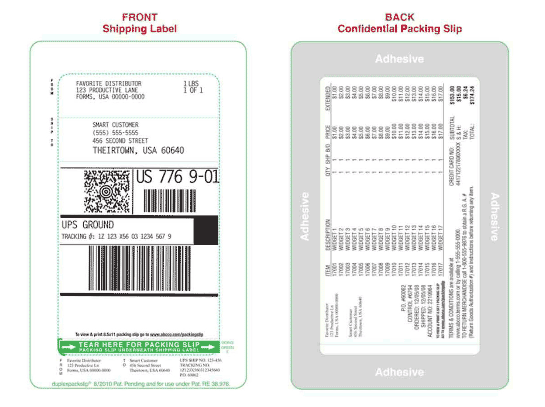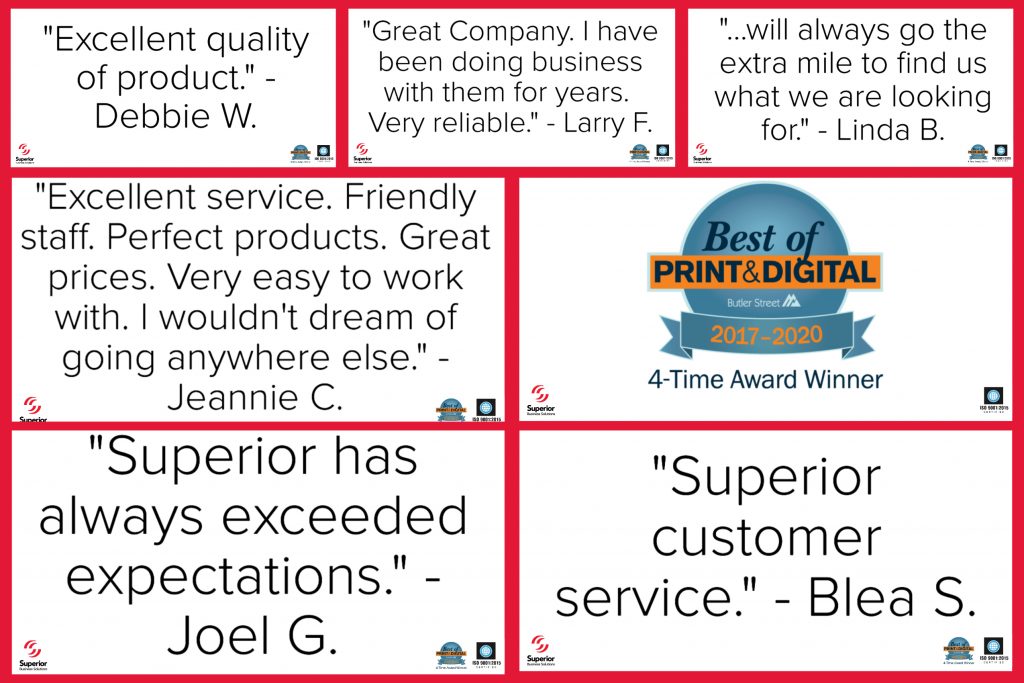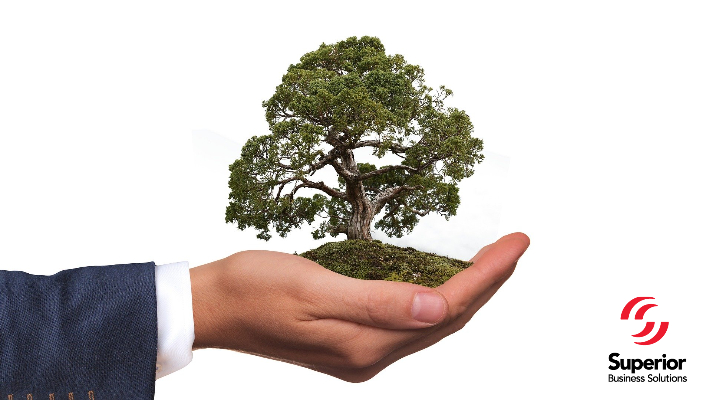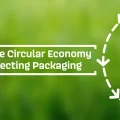Print That Saves Our Planet—What’s New That We Can Do?
With COVID-19 dominating the news every hour, you might be wondering “what on earth can we talk about instead?” Well – how about…the earth? Did you remember or even know that Earth Day is April 22? I thought today it would be nice to promote a range of solutions for labels and print materials that help protect the planet for this and future generations. COVID-19 will eventually pass. But sustainability will still be an issue, so let’s get started on solving that, too.
We have discussed eco-friendly printing options in the past, but things (and people) change quickly, so it’s time to take another, deeper, look. Let’s see “what’s new that we can do” to help our planet, that special guest of honor in Earth Day festivities.
Smart and Sustainable Print, Packaging and Label Solutions
Every company feels challenged to deal with the COVID-19 situation. But the smartest ones will also keep their eyes on the bigger picture in order to emerge stronger than ever. And that bigger picture includes the move toward ever-more-eco-friendly print processes and decisions. It’s good for the globe, and it’s good for businesses that show a progressive, sustainable image.
Since we’re into 2020, I decided to share 20 good solutions. It wasn’t difficult at all. You can find plenty of green solutions for everyday printing projects, and others for specialty printing like labels, packaging, promotional items, direct mail and more. Here are 20, in no particular order.
20 Eco-Friendly Print, Packaging, and Label Solutions
-
Use QR Codes
It stands for “Quite Responsible” in terms of eco-friendliness. You’ll be amazed at how QR codes work for business. Instead of printing thousands of brochures, a simple QR code on packaging, flyers, even business cards can quickly relay a prospect to a website, where the same information is available. That’s efficiency.
-
Speaking of Business Cards…Color or Not, Make Them Green
For maximum environmental responsibility, those cards should be made from paper that is made from 100% post-consumer waste and 100% processed chlorine-free. Worth checking out are these eco-friendly seed paper business cards from our sister brand. More on seed paper below.
-
Digital or Offset Is a Green Decision
Printing decisions are made on cost and quality, but increasingly environmental issues play a role. A good printer will help you make the right call based on the type of your files and quantity needed. The smart positioning of smaller items (like postcards) on larger stock can minimize paper usage and maximize efficiency in digital printing. But when color precision and other issues dictate offset, paper and ink decisions can make environmental sense.
-
Consider Size
At the design stage, think about how big a document or promotional piece needs to be. Trimming its size just a bit can eliminate significant paper waste.
-
Involve Your Designer
Many decisions made at the design stage affect the environmental impact of a print job. Size mentioned above is just one. The inks and paper that are specified should be chosen for what they contribute to the design and how they contribute to preserving earth’s resources.
-
Think Green on Any Schedule
Rush orders don’t have to knock environmental consideration out of consideration. Due to recycled paper and eco-friendly inks being in stock at most printers, your job shouldn’t take any longer.
-
Green Printing Doesn’t Have to Cost More
Cost depends on many things, including the process and materials used. Without getting too technical, it is simple to make up for any “green” cost differences with very subtle adjustments to trim size, recycled paper that only looks less bright in direct comparison, and more. Except, of course, you are using…
-
Seed Paper – Print with a Purpose
Seed paper is more expensive, but it makes a very conscious and recognizable difference. Wildflower seeds are actually embedded in the paper, so it can be planted after use to create a lasting (literally) impression. A special product for special occasions – like invitations to an event occurring on Earth Day would have been perfect!
-
Switch to Half-Clamshell Packaging
Another eco-friendly tactic involves altering your clam-shell packaging. Use a heat-sealed film top instead of the top clamshell. Sustainable, easy to use, and preserves freshness all at once. It requires fewer raw materials to make, less waste, and more products per shipment to reduce gas consumption and greenhouse gas emissions. Bigger display surface for brand identity and other information, as well. Less plastic, more promotional value.
-
Use Eco-friendly Labels

Labels can be small – but they are used by the billions, so they have significant environmental impact. But there are good solutions. Two-sided duplex thermal labels combine shipping label and packing list in one, with no plastic pouch necessary. Costs less and saves resources. Linerless labels are cut from a single adhesive band at time of use, with no backing papers to dispose of. Efficient, economical, and eco-friendly. -
Use Recycled Labels and Stickers
Labels and stickers can be environmentally friendly when they are made from 100% post-consumer waste. Recycled fiber content is processed chlorine-free. Labels and stickers can be printed on laser or inkjet printers for convenience and sustainability.
-
Green Up Your Direct Mail
Direct mail works, but it can work more effectively and be “greener” at the same time. First, use recycled paper stock and minimize redundant or seldom-used response inserts. But most importantly, focus your list to achieve better efficiency and less waste of your time and money on unlikely prospects. Lower printing costs and drive up the response rate by targeting the most promising prospects based on expressed interest or sales, not broad demographics.
-
Your Banners Can Carry a Green Message
Trade shows, company facilities, event sponsorships – your banners are larger and more prominent than you probably remember. The same bright, colorful logo and messaging can be achieved using recycled plastic that will biodegrade quickly in a landfill.
-
Promotional Items That Promote Eco-Responsibility
Promotional items are ubiquitous at those same trade shows and events, and are frequently handed to prospects, clients on sales calls and employees. Green them up two ways. First, select items that use minimal plastic or other less-than-eco-friendly materials. Even better, select an item that itself is a symbol of environmental responsibility. It will intrigue your prospects, and help establish your company as one that is environmentally concerned.
-
Think About the Ink
We’ve talked about paper a lot. But inks can also make a difference. Try to stick with soy or vegetable inks in standard colors. Metallic and fluorescent inks are not eco-friendly.
-
Foils Are an Environmental Fail
Like those inks I just mentioned, foil is not the most eco choice. They are harmful to the environment. Thus, avoid them if you can, and minimize them if you can’t.
-
Print Realistic Quantities
Many businesses, in pursuit of low per-unit costs, print huge quantities of brochures, flyers and other materials. That ties up plenty of unnecessary money in inventory, and things invariably change, rendering those “stored” materials worthless. Then what happens to them? Better to find a provider with many print resources to find you good pricing without huge quantities. Your provider will help you manage print projects carefully and offer “print on demand” capabilities.
-
Digital and Print Media Should Work Together
Forget all the rallying cries. Print is NOT dead, and digital is NOT spam. Both have a role to play in your marketing and operational activities. Find the balance, and let each do what it does best – but working together to help you achieve your business goals.
-
Publicize Your Green Efforts
Once you start making environmentally friendly print decisions, don’t keep it a secret. It won’t be boasting if you let the world (more specifically clients, prospects, and employees) know you are doing it. If it’s a cause you genuinely believe in, you will want to show others the way, and let them know you have already committed to it. True sustainability can never come until we get everyone “on board.”
-
Make an (Earth) Day of It
Tomorrow is Earth Day. We’ve come a long way from the first one in 1970. Today, we all recognize that we’ve got a pretty great planet, and we have some responsibility for ensuring it stays that way. So I challenge you to DO something that makes your business, your company, or your office just a little bit “greener.”
Make Green Happen
If any of these ideas intrigued you and you’re wondering how to start, that one’s easy. Call us. We’ve got almost a century of experience, and an ISO certification you can count on for proven, reliable customer service. And we’ve earned four consecutive Best of Print and Digital awards based on customer feedback. That means that a great many customers who took us up on that “call us” thing, and are very happy that they did.

Contact Superior today, and ask us for help in building a greener print supply chain for your business. My experience tells me you’ll be glad you did. And so will this planet we spend most of our time on. Happy Earth Day!



